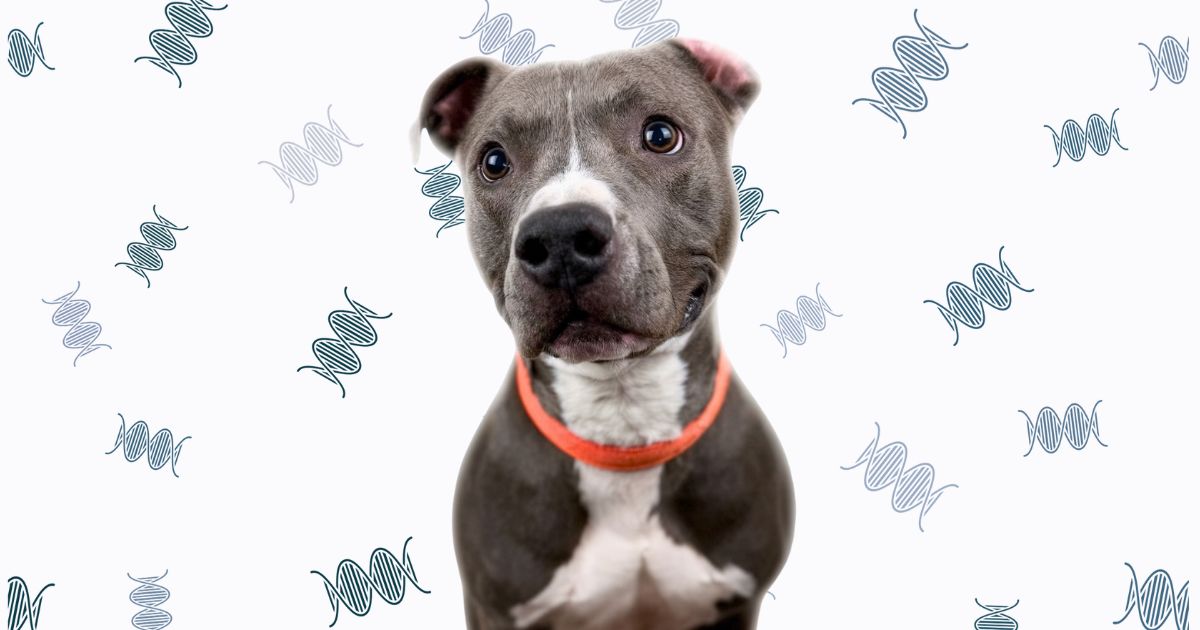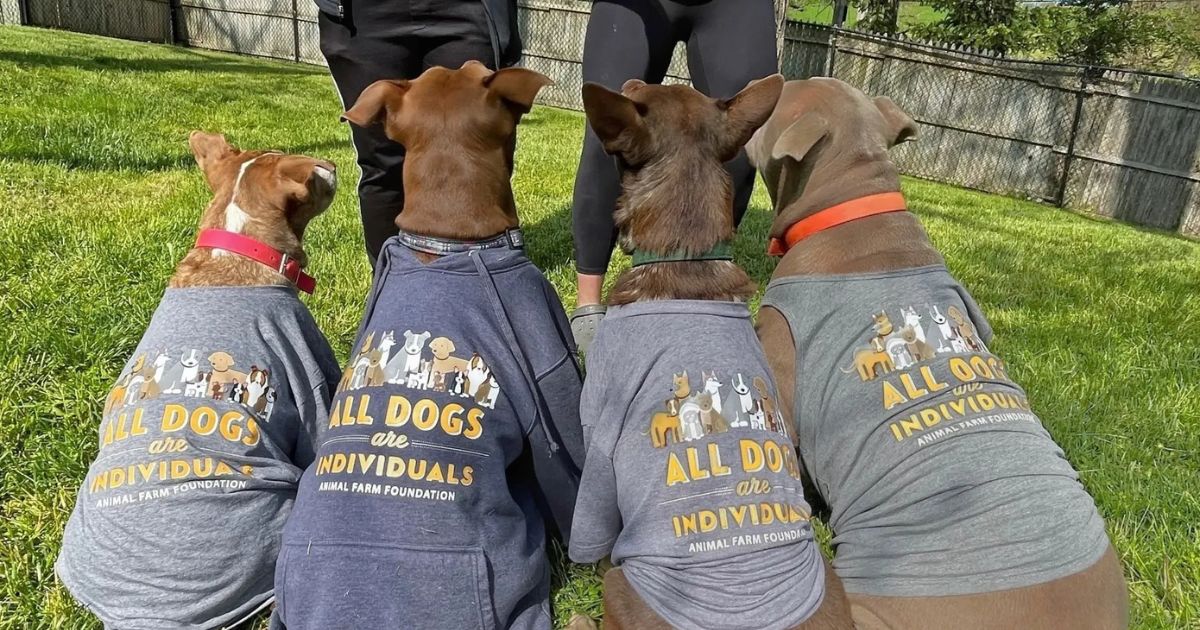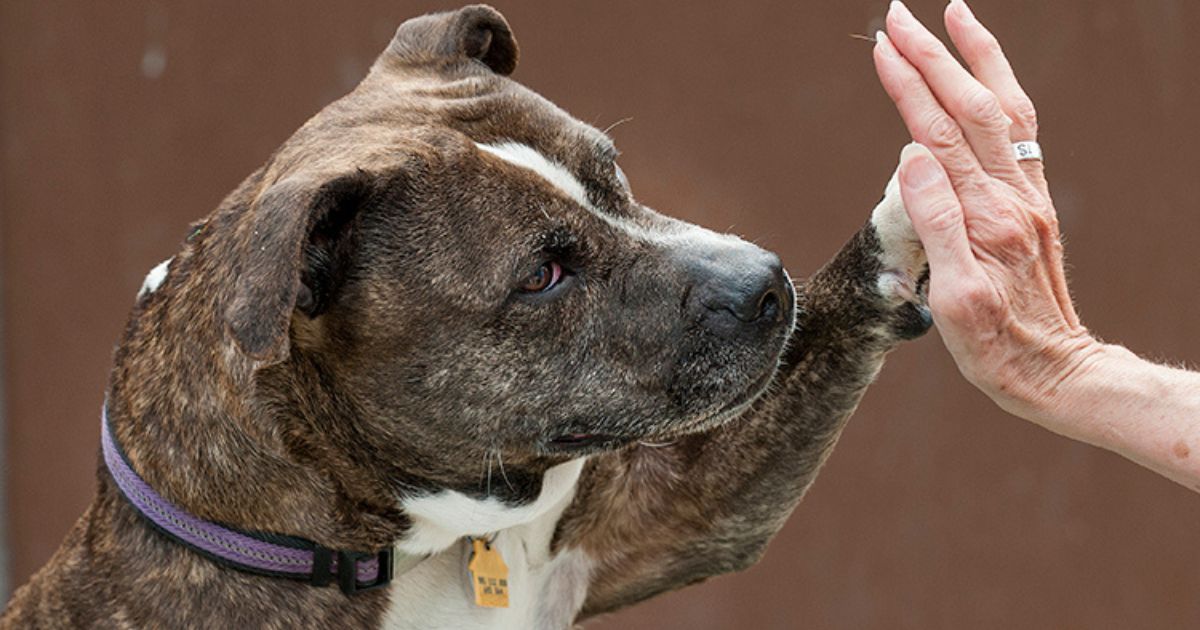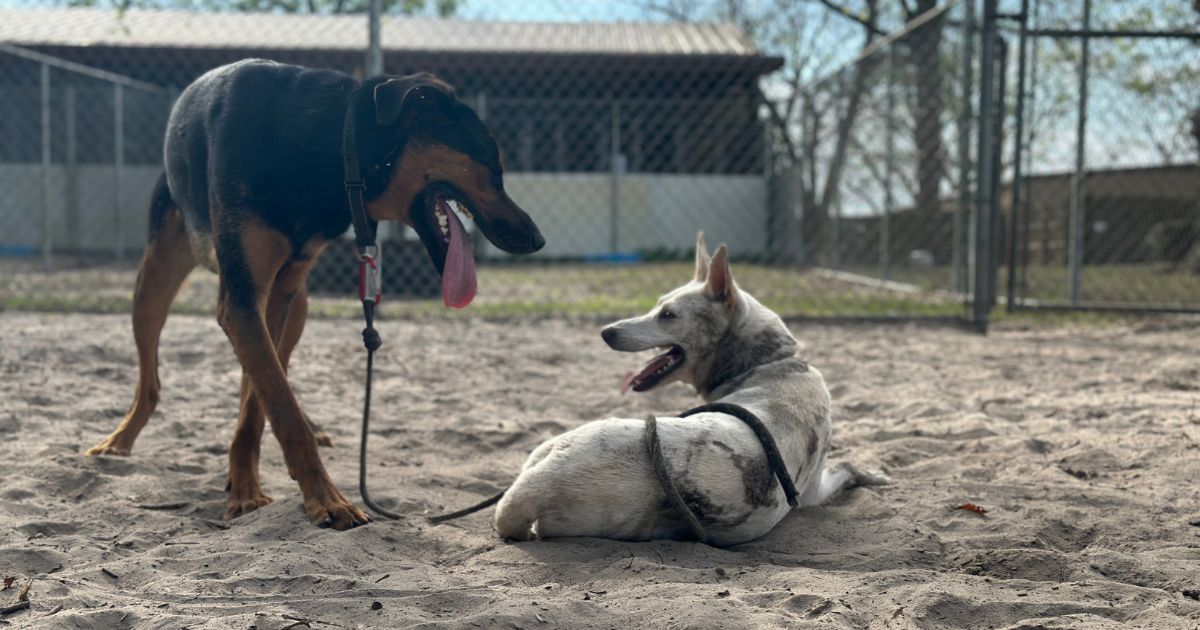This blog was originally published in April 2013. Updated July 2025
Xena, Brutus, Trigger, Monster, Ruger, Tank, Harley, Chopper, Flex, Maximus, Whiskey, Storm, Tyson, Gunner, Bullet, Boss…
Before you name a dog in your care, consider this: You can influence adopters’ perceptions of dogs starting with the names you give them. That’s because their names frame them—creating the context for how adopters will interpret the dogs in front of them. With dogs staying in shelters nearly twice as long as they did before the pandemic, every element of positive framing matters more than ever in helping dogs find loving homes.
The Science Behind Framing
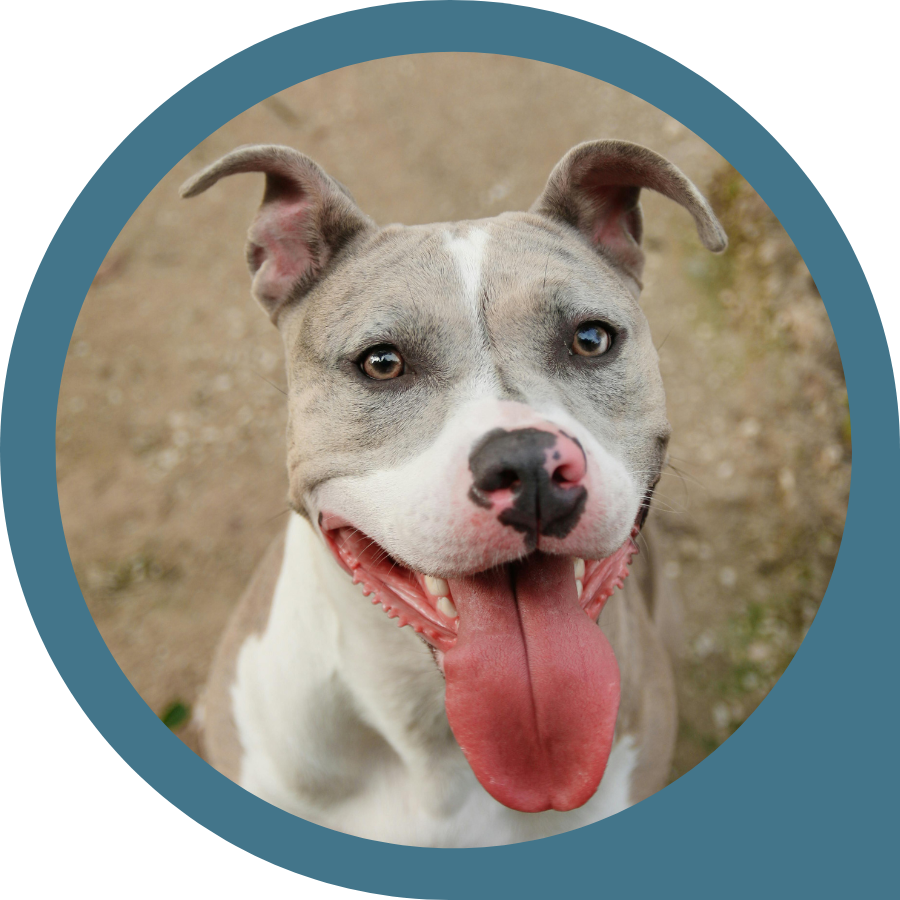
Meet Bluey. What does that name make you think about? Do you form any expectations about his behavior based on his name? What if his name had been Blaster, Ripper, or Tank? The name “Bluey” suggests playfulness, family fun, joy, and humor, all positive associations that might make someone curious to meet this dog.
This isn’t just intuition—it’s science.
When we make deliberate choices about how a dog is presented through kennel cards, photos, bios, blankets in their run, or even a name, we shape and alter adopters’ assumptions and perceptions about that dog. This approach, called framing, is a scientifically backed method of communication that shapes how people think, feel, and act.
But there’s another important layer: when people browse individual animals or adoption listings, they’re also forming impressions about the organization itself. Thoughtful naming demonstrates the genuine care given to even the smallest details of each animal’s experience. For many people who may feel intimidated by the idea of visiting a shelter, seeing evidence of this care and attention helps build positive associations with the entire organization—and indeed, builds goodwill for all shelters and rescues.
The Problem with Negative Names
The problem with tough-sounding names or names related to weapons or violence is that they reinforce negative perceptions and can create unnecessary barriers. When potential adopters encounter names like “Gunner,” “Bullet,” or “Killer,” they may hesitate, even if only subconsciously, to learn more about the dog.
One dog, framed two different ways, can have dramatically different results. Negative frames tend to elicit negative feelings and result in aversion. Positive frames tend to elicit positive feelings and result in proactive choices.
Even ironic names, such as “Tiny” for a large dog or “Teflon” for a dog who’s survived trauma, can backfire. They might emphasize features that adopters don’t find appealing or unintentionally perpetuate misconceptions. Studies in psychology and framing demonstrate that people have a natural negativity bias, meaning we tend to give more weight to negative information than positive. The result is that even a playfully ironic name can create unintended negative associations that stick in our minds and overshadow positive qualities.
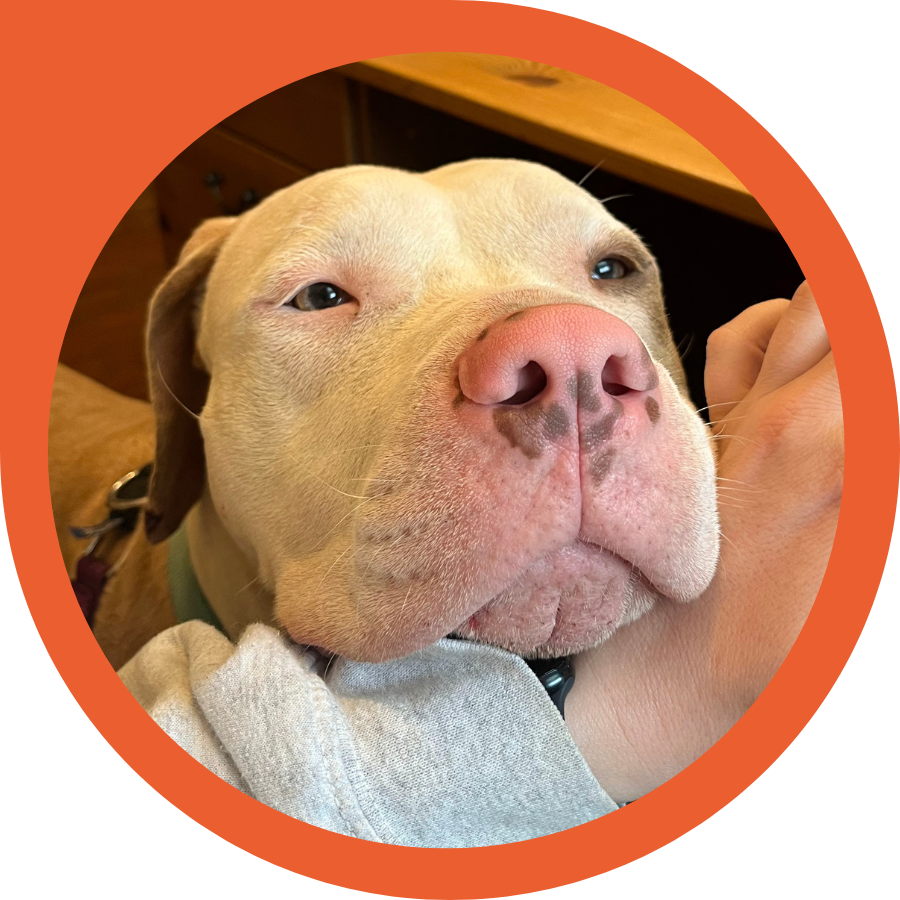
What Names Work Best?
So what does the research tell us about choosing effective names? Research from the psychology field shows that first impressions are formed within 100 milliseconds—just a tenth of a second—and significantly influence all subsequent judgments. In marketing, studies consistently show that brand names alone can affect perceptions of quality, trustworthiness, and desirability. Since shelter marketing operates on the same psychological principles—creating positive first impressions to encourage further engagement—names become a crucial tool in the marketing toolkit.
Consider these ideas for inspiration:
Classic human names: Research indicates that old-fashioned human names for dogs have become increasingly popular, with names like Clara and Alfie trending upward. These names create an immediate emotional connection and suggest the dog is already family-ready.
Themed names: Shelters report success with themed naming approaches. For example:
- Jane Austen characters: Edward, Darcy, Marianne
- Friends characters: Monica, Ross, Rachel, Joey, Chandler, Phoebe
- Foods: Marinara, Side Salad, Garlic Knot
- 80s/90s nostalgia: Lisa Frank, Trapper Keeper, JanSport
Pop culture references: Names from current shows (like this example of puppies named after TODAY Show anchors), classic movies, or popular books can create instant connections and conversation starters.
Positive descriptors: Sunny, Happy, Brave, Sweet—names that embody the qualities we want people to associate with dogs.
Geographic locations: Vacation spots, national parks, local landmarks—places that evoke positive memories and feelings.
Putting it into Practice
Making this a reality requires some planning and consistency. Here are some practical ways to make this work:
Develop a Pre-Approved Name List: Keep a brainstormed list of positive names at your intake desk for quick inspiration. This ensures consistency and helps avoid problematic names during busy intake periods.
Consider Your Community Context: What names and references will resonate with your local adopters? A dog named after a beloved local figure might find a home faster than one with a generic name. For added engagement, you can even have your community vote on social media or submit their own name ideas.
Use the “Smile Test”: What names make you smile? If a name brings joy to shelter staff and volunteers, it’s likely to have a similar effect on potential adopters. This simple test aligns with what we know about emotional connection—that positive feelings create stronger bonds and more memorable experiences.
A word of caution: those of us working in animal welfare sometimes develop a dark sense of humor as a coping mechanism, so what we find funny isn’t always shared by the public. Think less about what makes you chuckle during a tough day and more about what would make your mom, neighbor, or friend smile. When we choose names that consistently evoke warmth and happiness in the broader community, we’re creating the kind of positive associations that help people envision bringing a dog into their families.
Remember the Goal: Choose names that can’t be associated with something obviously aggressive, illegal, or reckless. While there’s no one name that will create positive associations for everyone, you can aim to create a positive experience for the majority of folks who visit your shelter’s website or kennels.

When Dogs Come With Names: If a dog arrives with a name that might create barriers to adoption, thoughtful renaming can be part of an effective marketing strategy. Research shows that dogs can learn new names quickly—often within just a few days.
Remember, adopters can change the dog’s name to anything they choose once the dog is home. That’s when the best kind of framing happens, as a brand-new family member!
Please note: This blog pertains to dogs living in shelters who do not have families. Marketing is an important aspect of increasing adoptions. If your family dog has one of these names, that’s perfectly ok! Your dogs are already part of your family and don’t need to grab the attention of potential adopters.


